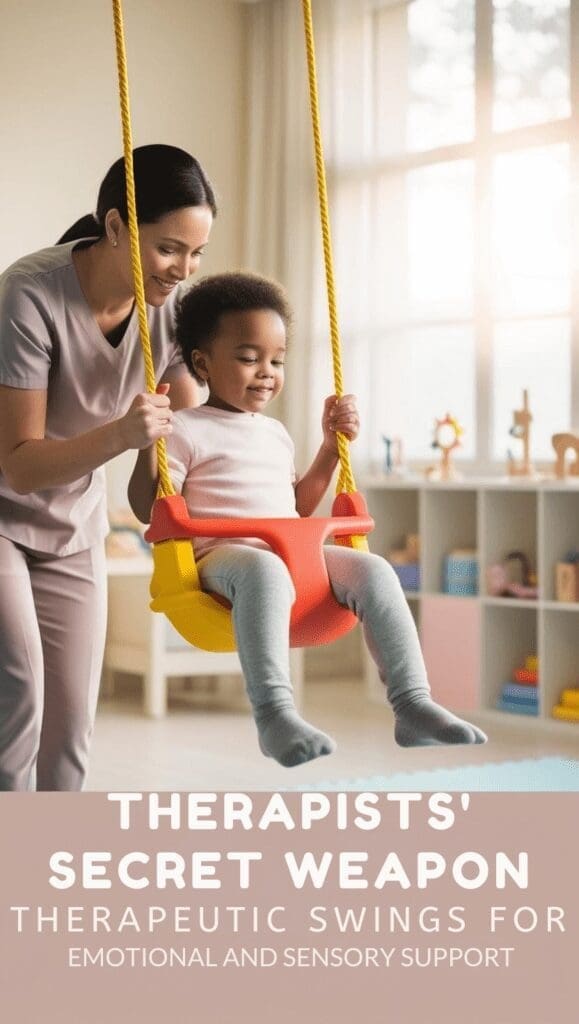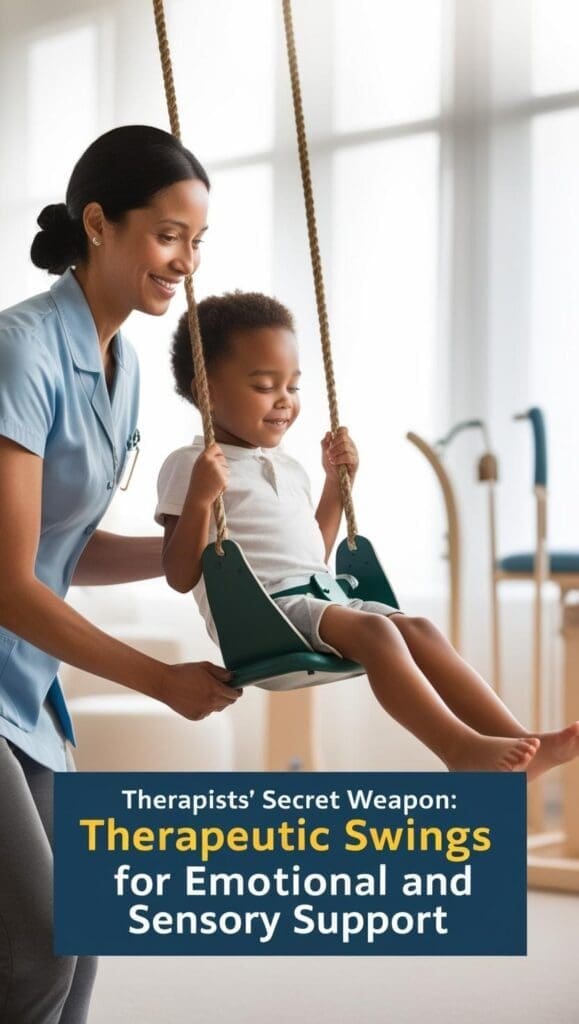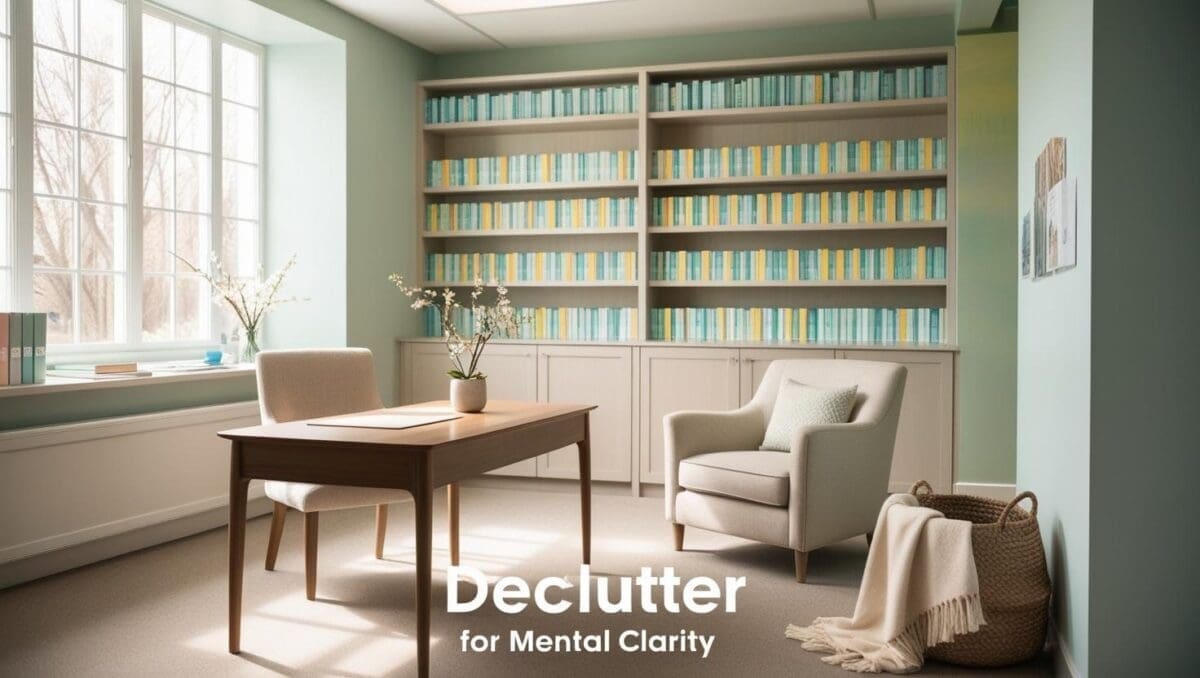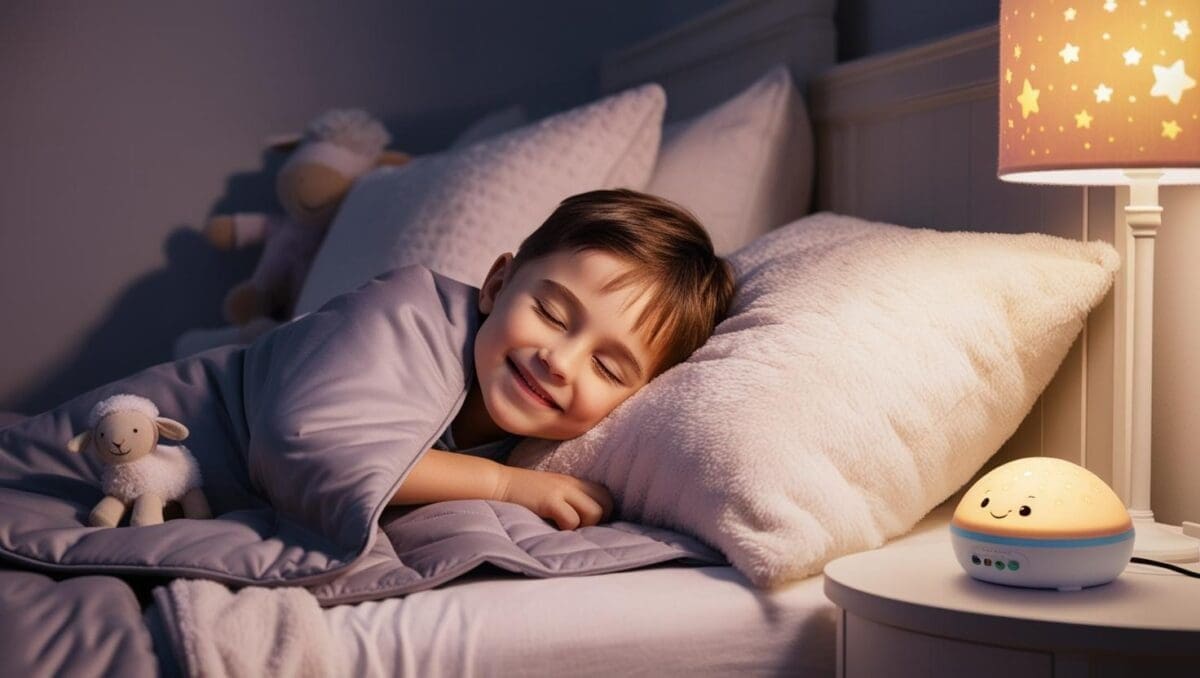Therapeutic swings have become a beloved tool in child therapy, offering a fun yet powerful way to support kids’ emotional and physical needs. These specialized swings go beyond playground fun – they are used by occupational and child therapists to help regulate children’s nervous systems and improve sensory integration. Therapists working with children who have ADHD, anxiety, autism, or sensory processing challenges often find that a swing can work wonders in calming a child or helping them focus. The gentle motion of swinging provides soothing vestibular input (sense of balance and movement) that can neutralize sensory disruptions and create a sense of safety. In practice, this means a child who starts a session feeling anxious or “wiggly” might relax and engage more readily after a few minutes in a therapy swing. Parents and therapists alike are recognizing that these swings aren’t just for fun – they’re valuable tools for nervous system regulation, which is the foundation for any effective therapy or learning experience.
Nervous System Regulation 101
To understand why swings are so helpful, we need to talk about nervous system regulation. Nervous system regulation refers to how our bodies manage stress and calm states. In scientific terms, it’s “a cascade of physiological responses our nervous system makes to reduce heightened states of arousal and increase calmness during times of distress.” When a child is dysregulated – for example, overwhelmed, anxious, or overexcited – their balance of “fight or flight” (sympathetic nervous system) and “rest and digest” (parasympathetic) is off-kilter. In a dysregulated state, kids struggle to concentrate, manage emotions, and participate in social or learning activities. The goal of many therapy techniques is to help bring the nervous system back into balance, so the child feels safe, calm, and ready to engage.
Movement is one of the fastest ways to influence nervous system regulation. Ever notice how rocking a baby can soothe them? Similarly, rhythmic motion like swinging can calm an agitated nervous system by providing organizing sensory input. The vestibular system (inner-ear balance sensors) is closely tied to arousal and emotion. Research shows that vestibular stimulation (like the motion of a swing) can actually reduce the body’s stress responses – it may help lower activity of the stress hormone system (the HPA axis) and activate a calmer state. In other words, swinging can literally signal the brain and body to slow down and relax. Occupational therapists often incorporate swinging or rocking activities for this very reason: regular vestibular input facilitates nervous system regulation. When a child’s nervous system is well-regulated – not in fight-or-flight mode – they can think more clearly and handle emotions better, making therapy sessions far more effective. A few minutes on a swing can thus set the stage for more productive work on speech, behavior, or learning tasks that follow.
Therapeutic Swings for Special Needs Kids
Therapeutic swings are especially beneficial for children with special needs such as ADHD, anxiety disorders, autism, and Sensory Processing Disorder (SPD). These kids often experience sensory dysregulation – their brains either crave certain input or get easily overwhelmed by it. Swinging addresses both sides of this coin: it can give sensory-seeking children the movement input they crave, and also soothe children who are hypersensitive and anxious. For example, children with SPD may struggle with an out-of-sync vestibular system; swinging helps “neutralize the disruptions” in their sensory processing and has a calming, organizing effect. Kids with autism or ADHD often use repetitive movement to self-soothe (think of rocking or hand-flapping as forms of “stimming”). A sensory swing provides a safe, appropriate way to get that need met, allowing them to enjoy the floating or rocking sensation which in turn helps them cope with sensory overload. For example, a child with ADHD who is feeling restless might sit in a pod swing and gently spin or sway, which can improve focus and reduce fidgeting. Similarly, anxious children often experience relief: the repetitive, gentle motion of swinging can be incredibly calming and has been shown to help children regulate their emotions and reduce anxiety. It’s like giving the overstressed nervous system a reset.
Different types of therapeutic swings serve different purposes, and therapists will choose a swing based on a child’s specific needs:
- Hammock or Cocoon Swings: These are made of soft cloth (often Lycra) that wraps around the child’s body like a hug. They provide a snug, enclosed space and gentle swinging motion. The deep pressure and “cocoon” feeling can be incredibly calming for anxious children or those with autism who love tight, secure spaces. “Suspended swings like the cocoon swing allow soothing swinging motions in a cocooned environment. This proprioceptive input can help regulate the nervous system, and the enclosed space appeals to children who enjoy snug surroundings.” In other words, a hammock swing gives a feeling of security (like a safe little hideout) while rhythmically rocking the child – a perfect recipe for reducing anxiety and calming meltdowns. These swings are commonly used for kids with sensory sensitivities to help them feel grounded.
- Pod Swings: A pod swing is a hanging canvas seat, often in a teardrop shape, with an opening for the child to climb inside. It usually has a cushion at the bottom. Pod swings create a small enclosed hideaway that can block out excess sensory stimuli. Children with anxiety or sensory overload can curl up in the pod swing to feel safe and relaxed. The slight swinging or spinning of the pod adds to the soothing effect. Pod swings provide what therapists call a “just right” level of sensory input – not too much stimulation, but enough motion and pressure to help the child organize their senses. For instance, a child with ADHD who is feeling restless might sit in a pod swing and gently spin or sway, which can improve focus and reduce fidgeting. Parents also like pod swings for home use because they’re cozy and appealing for kids who need a calm corner.
- Platform Swings: These swings have a flat, sturdy platform (often padded) that a child can sit, stand, or lie on. In therapy clinics, you might see a child lying on their tummy on a platform swing “flying” like Superman, or sitting criss-cross while the therapist gently pushes the swing. Platform swings are great for kids with motor skills or balance challenges. They provide vestibular input in a very controlled way – the therapist can adjust the swing’s speed, direction (front-to-back or side-to-side), or even add a slight tilt. Platform swings offer a secure, stable base for children who may have difficulty with traditional swings. Therapists use them to improve balance, core strength, and posture control. For example, a child with low muscle tone or coordination issues can practice maintaining an upright position on the moving platform, which is both fun and strengthening. Because platform swings allow a wide range of movement (even 360° rotation), they’re also used for sensory integration exercises and motor planning (teaching the child’s brain to coordinate movements). A platform swing can be very calming when used with linear motion, or very alerting if spun in circles – making it a versatile tool in a therapist’s toolkit.
Of course, there are other swing styles too – tire swings, bolster swings (log-shaped), chair swings, etc. – each offering unique sensory experiences. A good therapist will select the type of swing and the way it’s used based on the child’s therapeutic goals. The common thread is that all these swings harness the power of movement to support kids with special needs. Studies even suggest that vestibular activities can aid children with ADHD by influencing brain neurotransmitters like dopamine (which affects attention and motivation). In practice, many ADHD kiddos who struggle to sit still in class become noticeably more centered after swinging – their brains get the sensory “fuel” they need to pay attention. Similarly, anxious children often experience relief: the repetitive, gentle motion of swinging can be incredibly calming and has been shown to help children regulate their emotions and reduce anxiety.
Best Therapeutic Swing Options for Therapy
If you’re considering adding a therapeutic swing to your practice or home, there are many excellent options available. Below is a list of some of the best therapeutic swings – these are popular, highly-reviewed products that therapists and parents recommend for their quality, durability, and effectiveness. Each swing has its own features that make it shine:
- Harkla Compression Swing (Indoor Therapy Swing): This swing is made of stretchy fabric that provides a gentle squeeze (deep pressure) around the child’s body. It’s like a hug and a swing in one. Harkla’s compression swing is widely praised by both parents and professionals. Harkla is a company specializing in special needs products, and their compression sensory swing is a prime example of their thoughtful and effective designs. It provides a hug-like effect for the child, promoting feelings of calm and self-regulation. The swing can be installed indoors (it comes with the hardware for ceiling mounting) and holds up to 200 lbs, so even teens can use it. Reviewers love its durability and machine-washable fabric, and many note that it’s a “lifesaver” for helping kids unwind. For instance, one parent of a child with autism shared that the Harkla swing “provides him comfort and calms him down” during high-anxiety moments. If you’re looking for an all-around effective sensory swing, this one is often considered the overall best.
- Harkla Pod Swing (Enclosed Hanging Chair): Also from Harkla, this pod-style swing is another favorite for sensory needs. It features an enclosed canvas pod with an inflatable pillow at the base, creating a comfy nook for kids to sit in. When it comes to indoor sensory swings, the Harkla Pod Swing is at the top of its class. It provides an enclosed space with a soft cushion that offers both deep touch pressure and vestibular input, helping create a sense of calm. This swing can be hung from a single-point suspension (like a doorframe bar or ceiling hook) and is great for smaller spaces. It holds up to 150 lbs. Therapists recommend pod swings like this for children who get overstimulated easily – the child can climb inside with a favorite stuffed animal and gently swing or spin, retreating from overwhelming sensory input. The Harkla Pod Swing is also lauded for its easy setup and portability, making it a good option for therapy clinics or at-home use.
- Outree Kids Pod Swing Seat: For those on a budget or working with multiple kids, the Outree Pod Swing is an affordable yet high-quality choice. It’s a cotton canvas pod swing (similar concept to the Harkla pod) that comes in fun colors and includes all the needed hanging hardware. Despite its low cost, it’s very well-reviewed – over 6,000 reviewers online give it high marks. What makes the Outree pod swing standout is its versatility and ease of use: it can be hung indoors or outdoors, is lightweight (just 2.2 lbs, easy to move), and still very sturdy. Therapists who have limited equipment budgets appreciate this swing as a cost-effective tool to achieve the same calming effect as pricier models.
- Platform Therapy Swing (Southpaw or Similar): For clinical settings or home therapy gyms, a platform swing is a must-have. Southpaw Enterprises makes a classic Platform Swing that is used in countless occupational therapy clinics. This swing consists of a wooden or padded platform that hangs by four ropes, creating a flat surface that can swing and tilt. Therapists love it because it’s incredibly versatile – kids can lie on their stomachs, sit or kneel on it, or even stand with support. Platform swings are usually more expensive than other types of swings but are incredibly durable and long-lasting.
Pros and Cons of Using Therapeutic Swings
Why use swings in therapy? There are many compelling benefits to incorporating therapeutic swings into child therapy sessions:
Pros:
- Calming and Self-Regulation: Swings can help a dysregulated child calm down and regulate their emotions. The vestibular input from swinging offers soothing sensory feedback, which is crucial for emotional and behavioral control.
- Improved Focus and Attention: Many children with ADHD benefit from using swings as part of their therapy. Swinging helps them use up excess energy, allowing them to focus better on tasks afterward.
- Sensory Integration and Development: Swings provide rich sensory experiences that enhance children’s motor skills, body awareness, and sensory processing abilities.
Cons:
- Space and Setup Requirements: Swings require proper space and secure installation, which can be challenging in small therapy offices or homes.
- Safety and Supervision: Always ensure the swing is securely mounted and use proper supervision to avoid accidents.
- Not Always Suitable for All Children: Some children might not respond well to the motion of swinging, especially those with vestibular sensitivities or high anxiety.
Conclusion
Therapeutic swings have proven themselves to be much more than just a fun diversion – they are genuinely transformative tools in child therapy. From helping a child with ADHD find focus, to soothing the anxieties of a child on the autism spectrum, swings address the fundamental need of the developing nervous system to feel balanced and safe. In the hands of a skilled therapist (or a mindful parent), a simple swing becomes a multi-purpose therapy instrument: it can calm or energize, build physical skills or provide emotional security, and above all, it engages the child in a positive way. By prioritizing nervous system regulation, therapeutic swings create the conditions where real growth can happen – a regulated child is ready to learn, connect, and heal.
For therapists, incorporating a swing can enhance sessions and open up new activities (and let’s face it, nothing beats the rapport you build when a child is laughing with joy on a swing you’re pushing!). For parents, understanding why the therapist puts so much emphasis on that “swing time” can illuminate how crucial sensory regulation is for your child’s mood and behavior. Rather than seeing it as mere play, we begin to appreciate swinging or rocking as foundational work for the brain and body.
In summary, therapeutic swings are an engaging and accessible means to support children’s nervous system regulation. They bring together the science of sensory integration and the simple pleasure of play. If you’re a child therapist, consider making a swing a staple in your practice – it might become the most popular “seat” in the house and a lifeline for helping kids calm their bodies and emotions. And if you’re a parent, don’t hesitate to ask your child’s therapist about swings or even try a sensory swing at home; it could become a favorite family tool for reducing stress (maybe even for adults who need a relaxing moment!). By gently swaying our way to a balanced nervous system, we give children the foundation they need to thrive in therapy and in life.
References
- Ayala, R. “Unlocking Sensory Benefits: How Swinging Helps Your Child Integrate Senses.” Brain Balance.
- Kumar, S. S., & Rajagopalan, A. “Vestibular Stimulation for Stress Management in Students.” J Clin Diagn Res. (2016).
- BrightAutism Blog – “Therapeutic Benefits of Rocking and Swinging.” (2023).
- Nortje, A., Ph.D. “What is Nervous System Regulation & Why is it Important?” PositivePsychology.com.
- DeMarco, A., OTR/L – Quoted in The Bump article “The Best Sensory Swings to Help Them Manage Their Feelings.” (2023).
- The OT Toolbox – “What to Know About Sensory Swings.” (2015).
- MontessoriGeneration – “Benefits of Sensory Swings for Children.” (2022).
- Ability Toolbox – “Sensory Swings Guide.” (2021).

About the Author
Hi, I’m Eve, a former school counselor with a master’s degree in School Psychology and a passionate advocate for children and families navigating sensory challenges. As a mom of children with sensory sensitivities, I deeply understand the journey special-needs parents face, and I dedicate myself to researching and sharing practical solutions to help children thrive and feel comfortable in their bodies. My goal is also to empower counselors, therapists, and psychologists with creative strategies and supportive resources to enrich their everyday practice. When I’m not writing or exploring new therapeutic approaches, you’ll find me spending quality time with my family and continually seeking inspiration from everyday moments.






